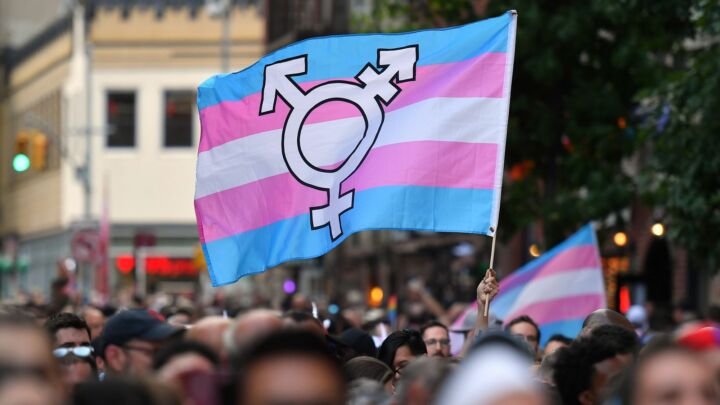Treating women like children
The proposed changes to the law on domestic violence are degrading.

UK home secretary David Blunkett in June issued new proposals on domestic violence (1).
Safety and Justice is a consultation document, which among other things proposes radical changes to the law. Its buzzwords are the three Ps: Prevention, Protection, and Perpetrator. It begins with three ‘headline’ pronouncements: domestic violence is primarily directed against women; 120 women each year are killed by their partners or ex-partners; and one in four women will experience domestic violence at some point in their lives. It intends to call perpetrators to account.
The biggest problem with this document is that it seeks to introduce the ethos of child protection work into dysfunctional adult relationships. It posits a picture of women at risk. It assumes that women, like children, are vulnerable and in need of help, and that as a society we should be vigilant to protect them from harm. But women are not children, and the argument that we should treat them like children demeans both women and the law.
The Home Office states that domestic violence is a hidden and insidious form of crime, which for far too long society has failed to take seriously (2). This skewed assumption, that society is to blame, sets the tone for the discussion that follows.
It is not as though society has no laws against domestic violence. We already have a host of civil and criminal laws to deal with this social problem. Women who are battered can apply for ‘ouster’ orders to keep violent partners from molesting them; and they can complain of assault, or grievous bodily harm, to the police. Sexual offences law applies equally to people in intimate relationships. Murder has always been forbidden.
It’s tragic that 120 women die every year, at the hands of intimates or former intimates; but it doesn’t follow from this fact that there is something wrong with the justice system. The fact that all civilised societies have laws against the taking of life doesn’t mean that all homicides can be prevented.
It’s also worth noting that, according to the Sentencing Advisory Panel, ‘In most years from 1989 to date at least half of all the homicides committed in England and Wales arose out of a “quarrel, revenge, or loss of temper”’ (3). If we could restrain people’s base impulses, we might prevent more killing. But the problem in a free society is, how?
The Home Office does not help its case for special treatment of domestic violence by suggesting that until recently domestic violence was not seen as unlawful (4). This is misleading. For centuries, the law has been that a husband has no right to inflict personal chastisement on his wife, or to imprison her (5).
The Home Office’s goal is ‘to make sure that the attitude no longer remains, anywhere, that violence is acceptable or justifiable’. But it undermines its case again with a very tendentious definition of violence, which confuses serious assaults with behaviour that isn’t an assault at all. It defines violence as ‘any violence between current and former partners in an intimate relationship, wherever and whenever the violence occurs. The violence may include physical, sexual, emotional and financial abuse’ [emphasis added] (6).
The Home Office does not explain what it means by these different types of abuse. Sexual abuse, presumably, means rape or indecent assault: so why not say so? The claim that emotional and financial abuse (whatever this means) equates with violence is ridiculous. However, the vagueness of these terms suggests that the government is concerned with a much wider agenda of social control.
The government considers that domestic violence, like sex crimes, is underreported. It aims to have increased reporting of domestic violence, leading to increased arrests. It wants to change attitudes ‘so that all victims of domestic violence feel safe in revealing the violence they have experienced’. And it wants to ensure that ‘victims are not deterred by the way they will be treated at any stage of the justice process’ and that ‘the civil and criminal law offers the maximum protection to all victims to stop the violence recurring’ (7).
There is an unspoken premise here, which is that all allegations of domestic violence are true, and that all men accused of it are guilty. The language is reminiscent of child abuse campaigners, who insist that we ‘listen to the children’. In such an atmosphere, the idea of legal safeguards for people accused of abuse becomes almost an irrelevance.
The government regards domestic violence as a form of child abuse. The Department for Education and Skills (DfES) is bringing out new guidance on what steps schools should take when it appears that a child is not at risk, but another family member is. All of this is intended to catch adult behaviour towards another adult, in the child protection net (8).
So it is not surprising to see the government suggesting that complainants of domestic assault should be given anonymity in the criminal courts, as they are in family proceedings. Its argument is that this might encourage more reporting. The rationale is that some women might be embarrassed, or even ashamed, to air intimate details about their family life in open court (9). The government claims that children’s privacy is invaded by a prosecution involving their parents (10).
But a criminal court is a public forum, in which the state prosecutes on the public’s behalf. Witnesses whose evidence may result in a substantial jail sentence for the accused should expect to undergo public scrutiny. Just because a case involves aspects of family life doesn’t mean that you can plead a right to privacy.
Otherwise, we would end up with a situation in which more and more criminal cases are conducted in private, to avoid someone being embarrassed by something, or whenever a witness happens to be a parent. And we would also see trivial or mischievous claims being pursued, under the cloak of anonymity.
The government claims to be dedicated to uprooting myths about domestic violence, such that women feel ashamed that it has happened to them, or that women somehow bring it upon themselves. But the idea that a woman cannot be expected to cope with going into a witness box, where she will be publicly identified, is equally stereotypical: it implies a degraded notion of weak and timorous women. It also blurs the distinction between public and private in an oddly incoherent way: if society must be concerned about what goes on behind closed doors, why can’t we know the names of those involved?
In this context, the government’s interest in specialist domestic violence courts, which handle both civil and criminal cases, is worrying. The government raises the question of different rules of evidence in civil and criminal cases and asks how this ‘problem’ might be resolved (11). But why is it a problem that civil and criminal cases involve different rules of evidence, or burdens of proof, for example? Civil and criminal courts perform very different functions.
It seems unlikely that these desperate measures will achieve a significant reduction in domestic homicide. More importantly, it’s doubtful that the Home Office proposals will strike much of a chord with the public.
Only recently the Equal Opportunities Commission, a body concerned with protecting women, published a report on contemporary attitudes to gender issues. This found that current equality approaches were seen as too rigid and out of touch (11). The government’s protectionist agenda is similarly doctrinaire, and assumes that more regulation will make people safer. It seems likely to make domestic life more fraught, rather than less.
Barbara Hewson is a barrister at Hardwicke Civil
Read on:
spiked-issue: Domestic violence
(1) Safety and Justice: The Government’s Proposals on Domestic Violence (Cm 5847, June 2003)
(2) Safety and Justice, para 2, p8
(3) Sentencing Advisory Panel, Consultation paper, ‘Minimum terms in Murder Cases’, 23 April 2002, Introduction, para 9
(4) Safety and Justice, paras 4-7, p8
(5) Halsbury’s Laws Vol 11(1) para 495
(6) Safety and Justice, p6
(7) Safety and Justice paras 16-17, 19, p10-11
(8) Safety and Justice para 34, p21
(9) Safety and Justice paras 25-29, p30
(10) Safety and Justice para 23, p12
(11) Safety and Justice paras 19-20, p28-9
(12) The Future Foundation, Talking Equality (2003), p8
To enquire about republishing spiked’s content, a right to reply or to request a correction, please contact the managing editor, Viv Regan.








Comments
Want to join the conversation?
Only spiked supporters and patrons, who donate regularly to us, can comment on our articles.